- Management Plan
- Total budget: £135,364
- Status: In Progress
The inland wetland of Mýrar in West Iceland is an ancient freshwater ecosystem of international importance. Its expansive freshwater habitats are resting places for migratory birds, some of whose global populations rely on them as breeding grounds. Within its many lakes and streams, species like the critically endangered eel feed and grow during epic migrations. In two key catchments of the Mýrar wetlands, we’re supporting the first wetland restoration project of its kind in Iceland for freshwater species. The goals? To unblock migratory paths, rewet drained peatlands and restore flows that connect all the way out to sea.
Project Timeline
August - December 2025
Restoration of peatland - constructions and monitoring.
August - October 2025
Removal of barriers and design the supervision and knowledge transfer to upskill contractors.
A vital breeding ground for international waders
Iceland is a crucial hub for migratory birds, hosting the breeding population of 52% of the world’s Eurasian Golden Plovers, 27% of Eurasian Whimbrels, and 12% of all Common Redshanks. After breeding, these birds migrate south, linking Iceland to ecosystems across Europe and Africa. The Mýrar-Löngufjörur area is one of the country’s protected natural areas, where these birds of international importance come every year to nest alongside others, like waterfowl species. Its low-lying aquatic vegetation provides perfect shelter, with rich food sources available from plant material, invertebrates and other species.
In our project areas in the Kálfalækur and Blöndulækur watersheds, a combination of peatlands, shallow lakes and small wetland streams are home to a diversity of flora and fauna. Some of the species in the area include: Brown Trout (Salmo trutta), Dunlin (Calidris alpina), Black-tailed Godwit (Limosa limosa), Common Snipe (Gallinago gallinago), Whimbrel (Numenius phaeopus), Spiny quillwort (Isoetes echinospora), Lake quillwort (Isoetes lacustris), Rusty Hook-moss (corpidium revolvens), Lustrous Bog-moss (Sphagnum subnitens subsp. Subnitens), and the critically endangered European eel Eel (Anguilla anguilla).

Epic eel migrations
One of the most remarkable lifecycles supported by Mýrar’s wetland ecosystems is that of the European eel (Anguilla anguilla). Traversing thousands of kilometres and transforming dramatically at different life stages, it's a story of endurance, metamorphosis, and survival.
Beginning life in its sole spawning grounds in the Sargasso Sea, eel larvae are carried up to 6,000 km via ocean currents to the coasts of Europe, where they metamorphose into glass eels. Icelandic wetlands become their home during a crucial growth phase that can last up to 20 years. Here, eels play important ecological roles as both predator and prey, before beginning their migration (without feeding!) back to the Sargasso Sea, where they spawn and die.
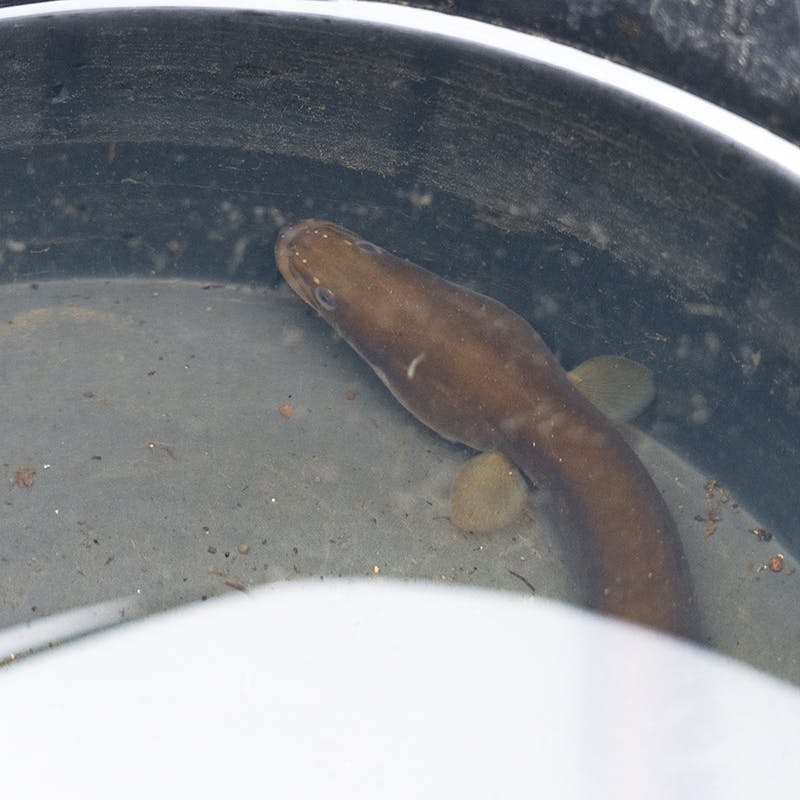
Peatlands: Wetlands shaped by time
Peatlands are unique wetlands where waterlogged soils preserve partially decayed plant matter over thousands of years. The low oxygen levels slow decomposition, creating rich, carbon-storing soils in conditions that support specially adapted plants like mosses, sedges and grasses. Many of Iceland’s wetlands are special in that they contain soil properties, such Andosol and Histosol, not commonly found elsewhere in the world. Their fertile grounds often consist of deep intact layers of peat with high organic content. Soils can extend 1-3 metres in thickness that can store 33 to >100 kg C m−2, which exceeds global averages of carbon storage.
The peatland vegetation in our project area is mainly characterised by Common cotton-grass, which provides food and habitat suited to numerous species, particularly wading birds. While this vegetation still shows signs of its original wetland character, historic land use has altered water flow and plant communities significantly.
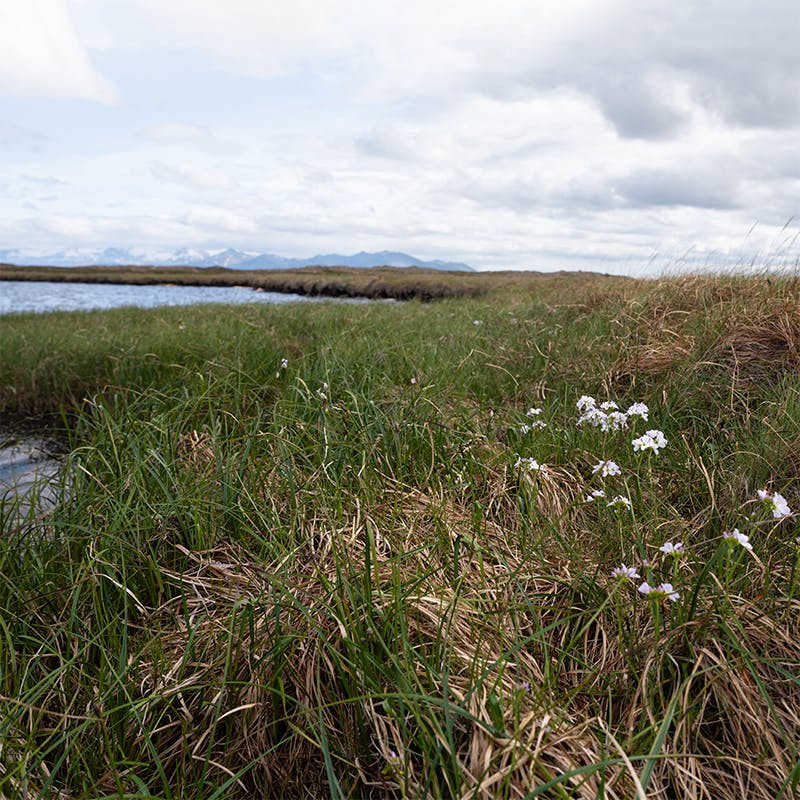
A landscape impacted by drainage and channels
Last century, widespread drainage and channelisation reshaped Iceland’s wetlands. Between 1960s and 1990s, in attempts to improve food security and rural livelihoods, the government subsidised access to large excavators, which farmers in Mýrar used to drain peatlands, lakes and straighten natural stream channels to expand agricultural land. While areas of land were converted, not all attempts were successful in improving conditions for farming. Today, only small areas of land are kept for horses and sheep grazing.
In the Kálfalækur and Blöndulækur watersheds, the channelised streams have led to the formation of barriers that disconnect freshwater habitats. They cut off vital spawning grounds for trout and blocked eels' migratory paths through the system. Habitats for other aquatic life have also been destroyed with reduced water affecting the integrity of the peatlands. Not only has this altered general ecosystem health, but it has increased carbon emissions as peatland conditions deteriorate and their carbon-storing powers diminish.
This project is an exciting opportunity to reverse some of the ecological damage in Mýrar by reconnecting freshwater habitats and reviving peatlands. Restoring these ancient wetlands not only supports local wildlife, it also provides crucial breeding and resting grounds for great migratory species, extending the impact far beyond Iceland.
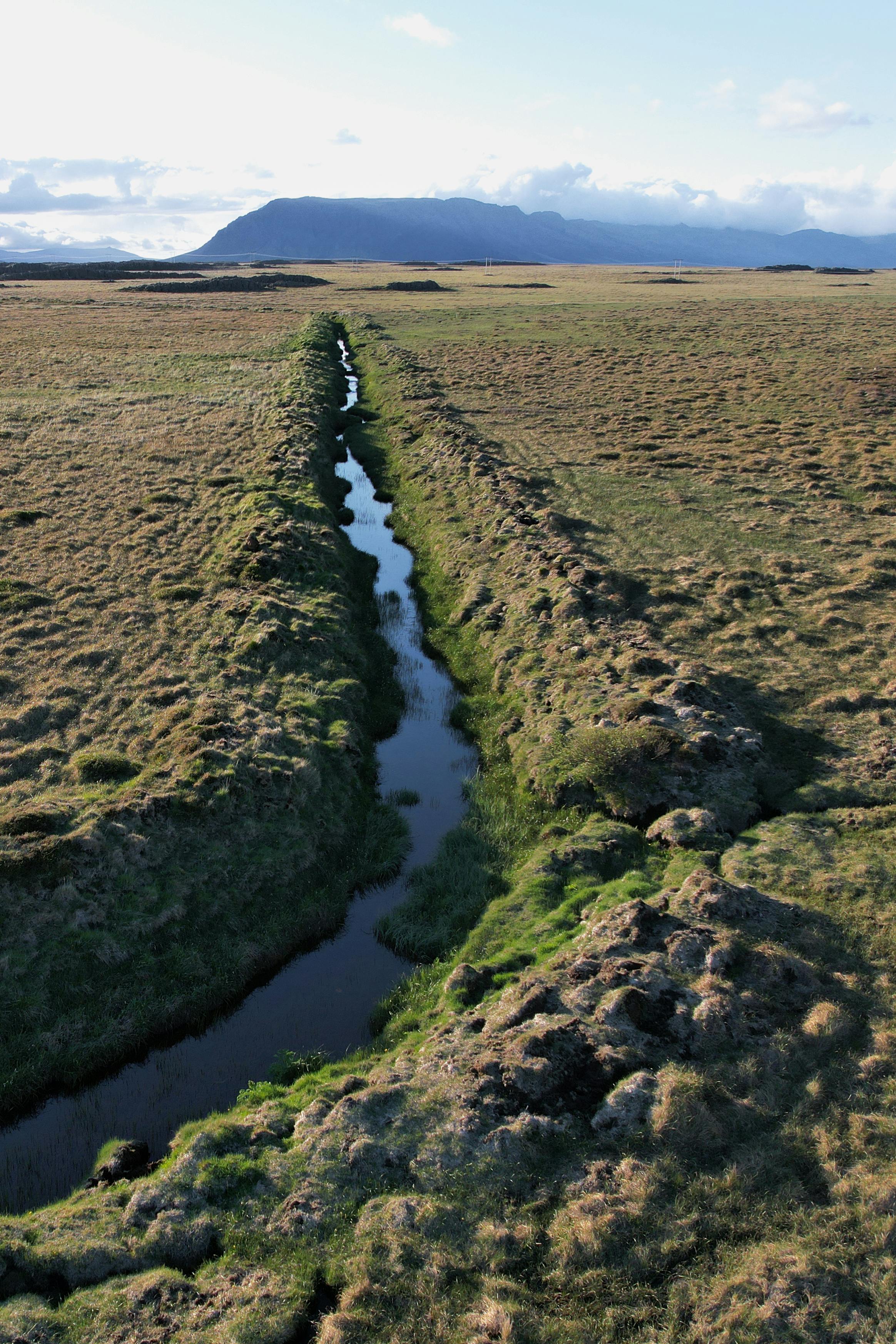
Our Project
In partnership with the Land and Forest Iceland, Fuglavernd/ BirdLife Iceland, the Marine and Freshwater Research Institute and the RSPB - Flyways Programme, we've identified these opportunities to improve the landscape.
This project is the first phase of re-opening connectivity and restoring channels, lakes and peatlands in the wetland system. Our focus is on restoring two vital watersheds in the Mýrar region: Kálfalækur and Blöndulækur. Both areas have been heavily impacted by past land use, where peatlands were drained, streams were straightened, and fish migration routes were blocked.
The goals:
- Restore natural hydrological processes and flows to reconnect habitat for migratory freshwater species
- Create and restore peatland habitat for more biodiversity, with a particular focus on breeding wader populations as an indicator of habitat function
If you want to see a lay of the land before reading our plans, view this 360° drone image.
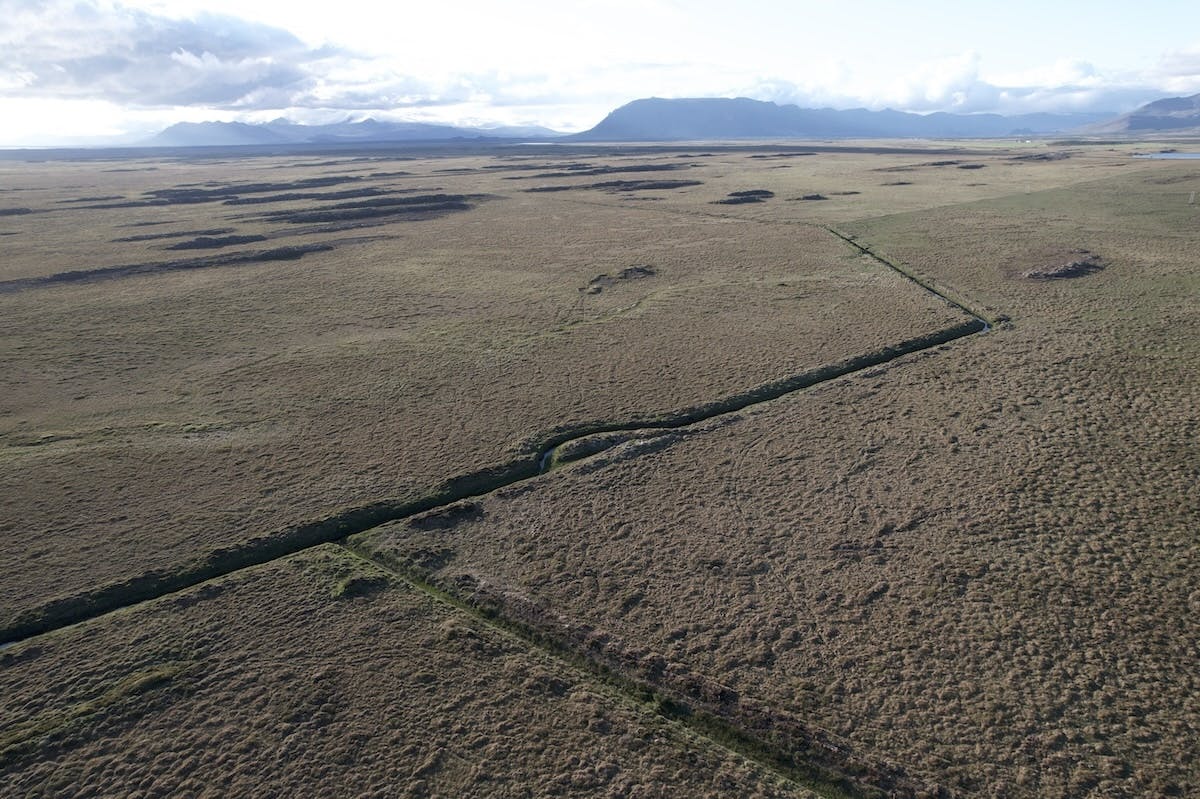
Reconnecting lakes
In both watersheds, we’re restoring natural stream channels and removing barriers that prevent migratory freshwater fish from reaching spawning and feeding grounds. This will be done by removing four man-made barriers and regrading the watercourses.
Kálfalækur watershed
Beginning with Stream Bretalækur in the Kálfalækur watershed, two barriers are being removed and redesigned using a natural step-pool approach. This involves closing drainage ditches that were cut into natural streams, diverting flows and causing the build up of barriers in the streams. By closing these ditches and re-profiling the area into step-pools, we will allow the flow to reach Lake Bretavatn. In doing so, this opens up 30.6 ha of feeding grounds for trout, connecting them from spawning grounds in the stream. Other species, including birds, will also benefit from the restored habitat, with islets in the lakes also providing breeding areas. This phase will improve the freshwater connectivity of the system by another 4 km.

Blöndulækur watershed
In the Blöndulækur watershed, we’re removing another two barriers to open access to two small restored lakes, which in turn will connect three lakes across the watershed. To do this, full channel realignments will replace artificial drainage ditches. For both barriers, we will close the channel and build more natural connections by redesigning the flow between lakes. Creating longer, more natural bends provides more habitat for aquatic organisms as well as helps prevent erosion, which could dramatically lead to the lakes draining again. By replicating natural and physical processes as much as possible, we are trying to ensure the re-opened watercourse is physically stable for the long-term.
The restoration work in Blöndulækur will result in critically endangered eel gaining access to two more lakes, which is 21.6 ha of new habitat. With the lakes reconnecting to 6.3 km stream habitat, this benefits both resident and anadromous trout who also access more vital habitat. Once the final obstacle is removed, there will be an uninterrupted flow that extends 16 km from the headwaters out to sea.
As part of the restoration, any fish present will be carefully rescued using electrofishing to safely move trout and endangered eels upstream before barriers are removed. In parallel, we're studying fish populations in affected lakes by trapping, measuring, and tagging eel and trout. The data will help us estimate population sizes, track their movement between lakes and understand their age and growth through scale analysis.
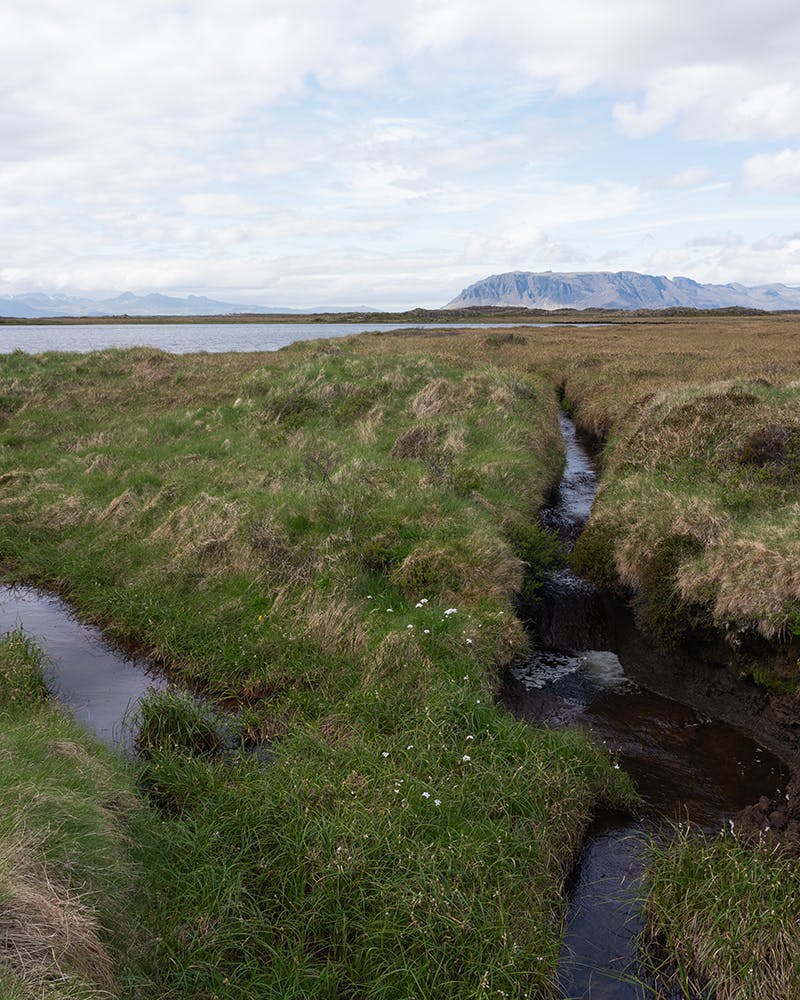
Reviving Peatlands
In total, 3,362 meters of surrounding drainage ditches will be closed, allowing the peatlands to re-wet and the water table to rise. As natural flows are restored, the decomposition of organic matter will slow and reduce GHG emissions, and conditions for peatland vegetation will improve. Overall, these changes will boost ecosystem health, benefiting many species but especially vital for wading birds and waterfowls, which rely on these wetlands being intact and healthy habitats to breed.
A model of restoration
This project also seeks to engage stakeholders like landowners in the process of restoring their lands. They will be supported and guided on how to track changes to the wetlands by being fully involved in the monitoring. Through active participation, our ambition is to demonstrate a new, more holistic model of wetland restoration— one which both biodiversity and people benefit.


A landscape shaped by water
Different angles of Mýrar's inland wetland ecosystem, including its inhabitants and species, the migration barriers and spectacular Icelandic scenery.
Tracking changes
To measure the impact of our actions, the project team monitors key indicators and compares outcomes to the baseline scenario. Some of the areas we’ll be looking to assess include changes in watercourse topology, peatland water table levels, wader populations, and where possible breeding densities recorded. Any relevant results that are gathered will be shared more widely through the RSPB Flyways Programme— a network of conservation sites aimed at protecting vital habitats for migratory birds along the East Atlantic Flyway.
Mossy Earth is providing €135,364 of the total budget of €157,483 to cover staffing, engineer contractors, equipment, travel and monitoring costs.
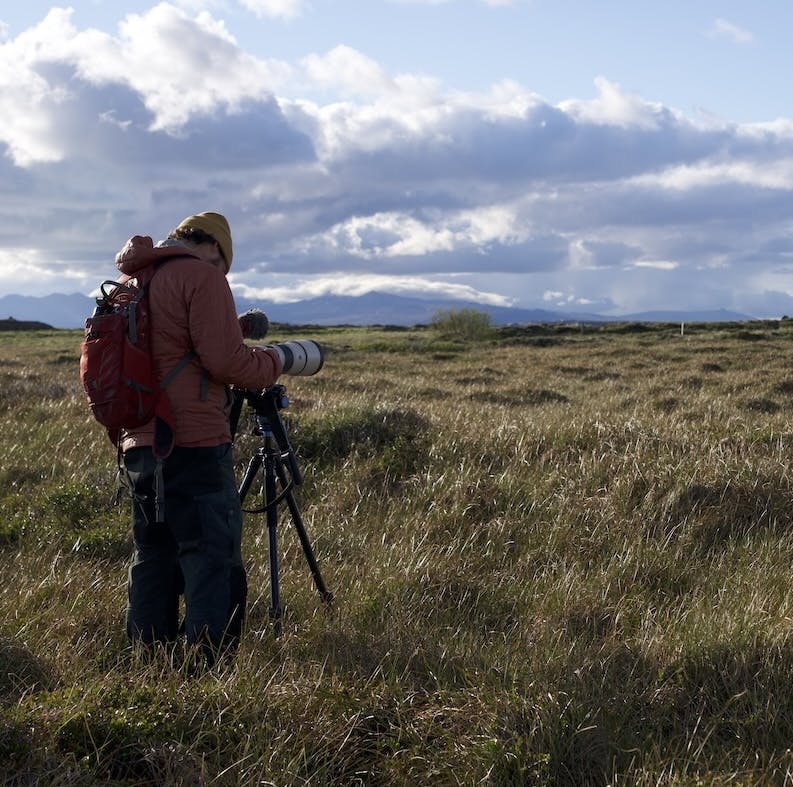
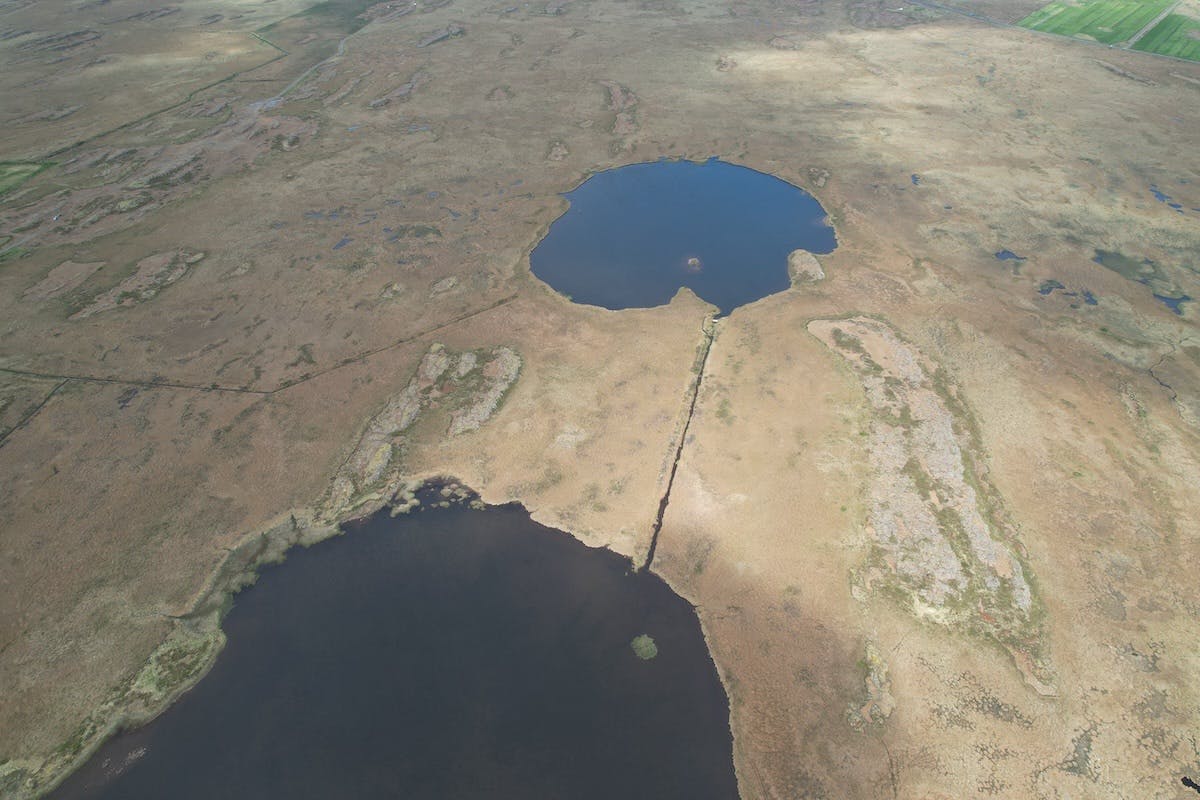
the team behind the project

Ellie Jackson-Smith, Restoration Ecologist @ Mossy Earth

Hólmfríður Arnardóttir, Executive Director @ Fuglavernd/BirdLife Iceland
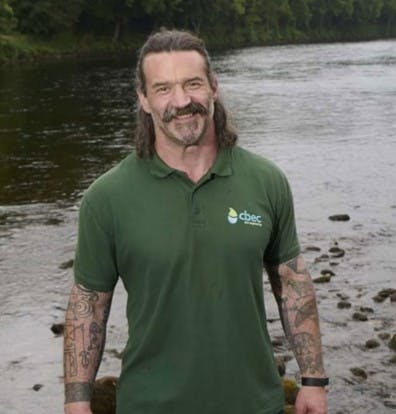
Hamish Moir, CBEC eco-engineering Europe Ltd
Sources & further reading






